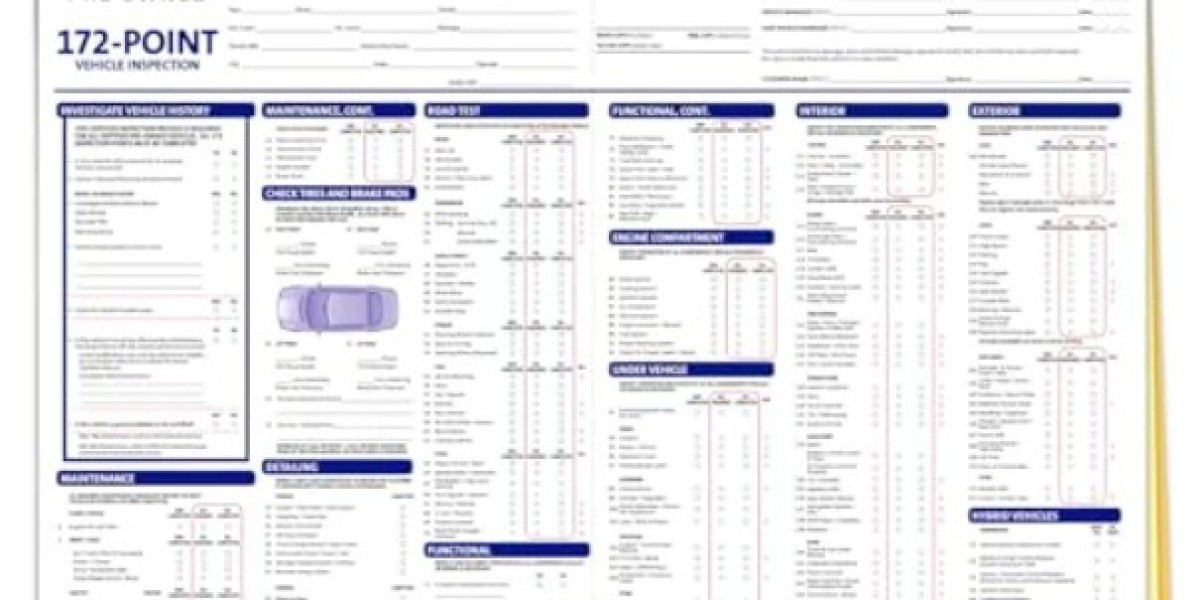What is a Multipoint Inspection Sheet?
A multipoint inspection sheet is a checklist used by mechanics and technicians during vehicle inspections. It outlines various components of a vehicle that need to be checked regularly, ensuring that everything is functioning correctly. This sheet can cover a wide range of areas, including:
- Engine performance
- Tire condition and pressure
- Brake system functionality
- Fluid levels (oil, coolant, transmission fluid, etc.)
- Battery health
- Lights and signals
Using a multipoint inspection sheet, mechanics can provide a detailed report on your vehicle's condition, helping you catch potential issues before they become serious problems.
Why is a Multipoint Inspection Important?
1. Safety First
The primary reason for a multipoint inspection is safety. Regular inspections help identify any worn-out parts or systems that may fail, putting you and your passengers at risk. For instance, checking the brakes ensures they are in good working order while inspecting the tires can prevent blowouts. When you keep up with inspections, you're taking a proactive approach to your safety on the road.
2. Preventative Maintenance
Regular maintenance can avoid many car issues. By following the multipoint inspection sheet, mechanics can catch problems early, often before they lead to expensive repairs. For example, low fluid levels can cause severe damage to the engine if not addressed. With a thorough inspection, you can address these issues promptly, saving time and money in the long run.
3. Increased Longevity of Your Vehicle
Vehicles are a significant investment, and taking care of them helps ensure they last longer. Regular inspections and maintenance keep your car in top shape, which can extend its lifespan. A well-maintained vehicle will also retain its resale value better than one that has been neglected.
How to Use a Multipoint Inspection Sheet
If you're a car owner, understanding how to use a multipoint inspection sheet can empower you to take better care of your vehicle. Here's how to make the most of it:
1. Schedule Regular Inspections
Most experts recommend having your vehicle inspected at least once a year, but more frequent inspections may be necessary depending on your driving habits. If you frequently drive in challenging conditions, such as rough terrain or extreme weather, consider scheduling inspections more often.
2. Review the Inspection Results
After the inspection, your mechanic will provide you with the completed multipoint inspection sheet. Take the time to review the results. They will usually include a list of items checked, along with notes on their condition and any recommended repairs. Understanding these results will help you make informed decisions about your vehicle's maintenance.
3. Keep a Maintenance Log
It's a good idea to keep a record of all inspections and maintenance performed on your vehicle. This log can be helpful for tracking your vehicle's health and may be beneficial when it's time to sell or trade it in. A complete maintenance history can boost your vehicle's resale value, as it shows potential buyers that you've taken good care of it.
Key Areas to Check on Your Multipoint Inspection Sheet
1. Tires
Tires are among your vehicle's most critical components. A multipoint inspection should include checking the tread depth, tire pressure, and overall condition of the tires. Properly inflated and maintained tires improve fuel efficiency and ensure better handling.
2. Brakes
The brake system is essential for your safety. During an inspection, the mechanic should check the brake pads, rotors, and fluid levels. If any of these components show signs of wear, it's crucial to address them immediately.
3. Fluids
Various fluids keep your vehicle running smoothly, including oil, coolant, brake fluid, and transmission fluid. The multipoint inspection sheet should include checks for fluid levels and any leaks. Low or dirty fluids can lead to engine damage and other issues if not corrected.
4. Lights and Signals
Working lights are vital for safe driving, especially at night or in poor weather conditions. An inspection should check all exterior lights, including headlights, brake lights, and turn signals, to ensure they function correctly.
5. Battery
A weak or dead battery can leave you stranded. The inspection should include checking the battery's charge, terminals, and cables. Regular checks can prevent unexpected battery failures.
Common Questions About Multipoint Inspections
1. How often should I have a multipoint inspection?
It's generally recommended to have an inspection at least once a year. However, if you drive frequently or under harsh conditions, consider having it done more often.
2. Can I do a multipoint inspection myself?
While some basic checks can be performed at home (like checking tire pressure and fluid levels), a professional mechanic has the expertise and tools to conduct a thorough inspection. It's best to have a trained technician complete the multipoint inspection.
3. What happens if my vehicle fails an inspection?
If your vehicle shows any issues during the inspection, your mechanic will recommend repairs. Addressing these concerns is essential to ensuring your vehicle remains safe and reliable.
To buy multipoint inspection sheet, click here.
Conclusion: Keeping Your Vehicle in Check
A multipoint inspection sheet is a valuable tool for any vehicle owner. Regular inspections can keep your car safe, extend its lifespan, and save you money on repairs down the road. Remember to stay proactive about your vehicle's maintenance, review inspection results carefully, and don't hesitate to ask your mechanic questions.



